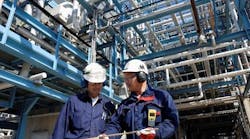The Enterprise Asset Management (EAM) and Field Service Management (FSM) markets recovered from the difficult economic environment over the past few years and are expected to grow from $1.85 billion in 2010 to $2.5 billion in 2015 for a compound annual growth rate (CAGR) of 6.2 percent, according to a report by ARC Advisory Group.
Retail sales and consumer confidence have improved, and a rebound in manufacturing is driving growth. ARC predicts some regions will grow more quickly due to macro-economic trends. China and India, though having a smaller base, will grow fastest. The Americas, with the largest regional market, is expected to have the next highest growth. Western Europe and Japan are forecasted to experience a lower, but sustained growth.
As the mobile handheld devices add functionality, ARC says new areas of business value have emerged. The convergence of technologies includes GPS, GIS, Wi-Fi, RFID, voice-to-text data, text-to-voice, digital camera, and gauges with Bluetooth enable more powerful applications. Increased productivity can be realized with applications such as location identification to optimize the travel time of technicians to geographically dispersed assets. Mapping the location of people in real-time in the plant, mine, or field also improves safety (emergency management and geo-fencing). The benefits of real-time location awareness are magnified when combined with the optimized planning, scheduling and dispatch functions provided by an EAM and FSM application. As smart phones and other mobile devices for consumers become more pervasive, expectations and willingness to adopt mobile devices improve. Mobile solutions drive EAM upgrades and wider user adoption.
EAM has specific key areas of functionality required by maintenance organizations, according to ARC. Asset Information Management (AIM) includes the processes and technology for organizing, creating, controlling, change management, and auditing of the information related to assets and equipment. Work Order Management includes the creation, planning, scheduling, schedule optimization, execution, documentation, and tracking of activities. MRO Materials Management includes the procurement and management of the needed materials. Labor Management is related to needs assessment, training, certification, and scheduling of labor resources (internal employees and contractor personnel) related to the management of covered assets. Service Contract Management includes the creation and management of contracts and service agreements. Mobility includes the application functionality needed for a mobile work-force. It is the bi-directional exchange, processing and presentation of information for EAM functional categories previously described. Reporting & Analytics includes the functionality for the analysis of an asset and asset management performance.

